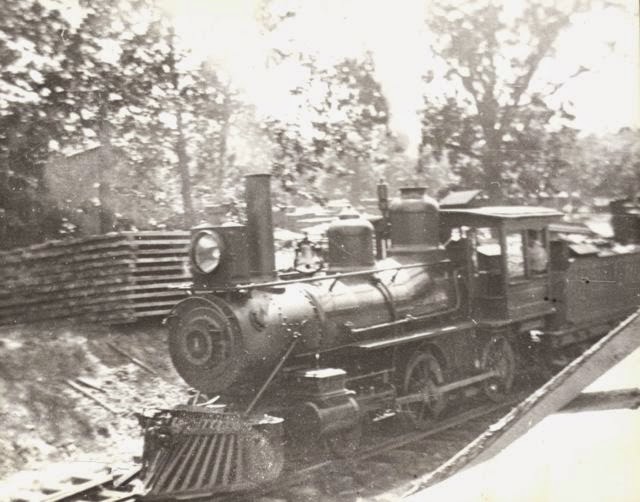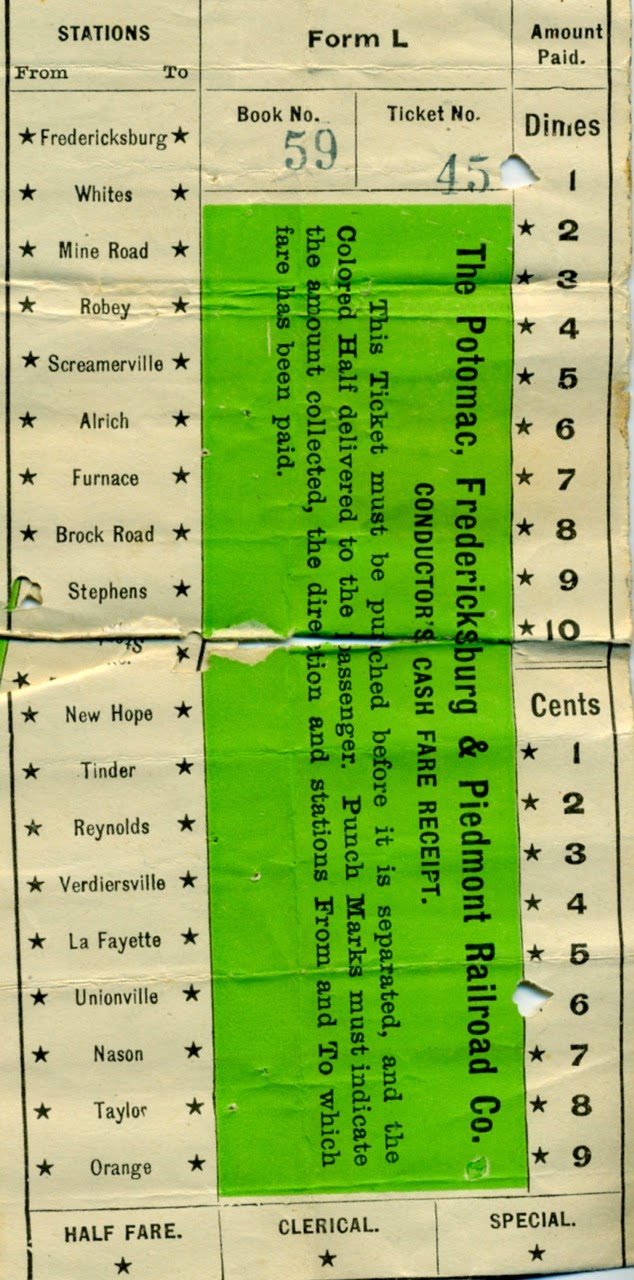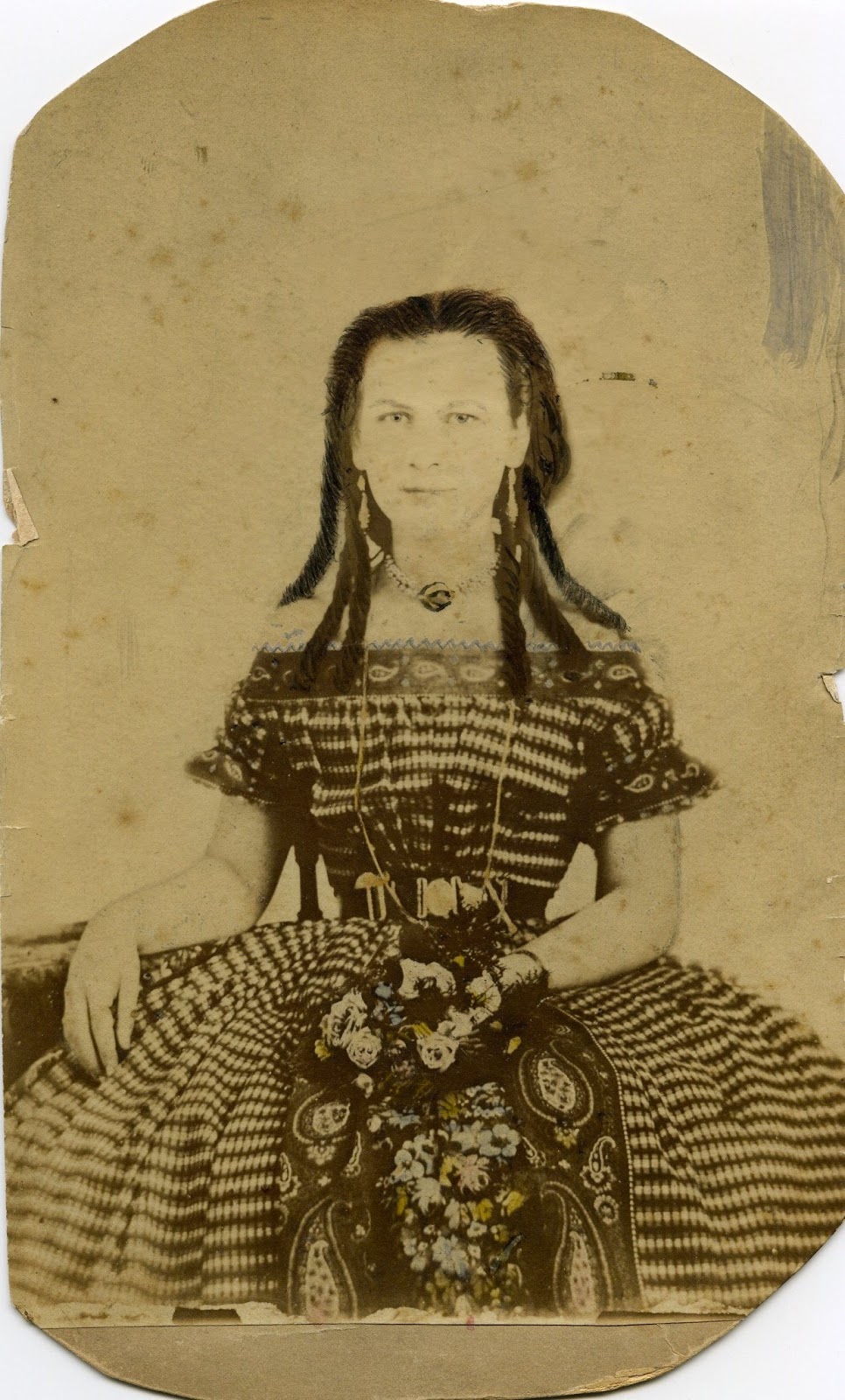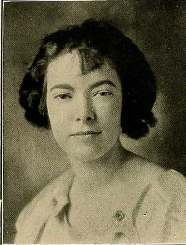![]() |
| Susan Margaret Chancellor (Rich Morrison) |
|
When she was 16 years old, she witnessed the destruction of Chancellorsville, the former home of her grandparents, during the epic battle that took place there in May 1863. Almost 60 years later, she shared her recollection of those times with a local historian [1], which was then published in
The Confederate Veteran in 1921.
Susan Margaret Chancellor was the youngest of 11 children who were raised at "Forest Hall," a large farm on the Rappahannock River near the United States Ford, arriving on February 19, 1847. The two maps below show the location of that farm. In the second map, the Chancellor farm is shown as "Major Fitzhugh."
![]() |
| Northwestern Spotsylvania County, 1863 (National Archives) |
![]() |
| Site of Forest Hall, 1863 (National Archives) |
Sue Chancellor's parents were Sanford Chancellor (1791-1860) and Frances "Fannie" Longwill Pound (1803-1892). Fannie's mother, Ann Lyon Pound Chancellor, was married to Sanford's brother, George Chancellor, for whom Chancellorsville was named. This connection made Ann Chancellor both his sister-in-law and mother-in-law.
A remarkable photograph of the Chancellors taken at "Forest Hall" about 1858 shows Fannie and Sanford Chancellor standing in the doorway of their house. The little girl sitting at the bottom of the steps is Sue Chancellor. Sue gave the original of this photograph to her nephew, Fredericksburg genealogist George Harrison Sanford King. The version shown here is part of the archive of the National Park Service, which generously shared it with me.
![]() |
| The Chancellors of "Forest Hall," about 1858. (National Park Service) |
During the War of 1812, Sanford Chancellor served on the staff of General William Madison, brother of the future president of the United States. For the remainder of his life, Sanford was often referred to as "Major Chancellor."
Sanford Chancellor served his community as a school commissioner, justice of the peace, sheriff of Spotsylvania County, and postmaster at Chancellorsville during the last year of his brother George's life, 1835-1836.
Sanford and Fannie Pound were married in Spotsylvania on January 7, 1823. Their first two sons, William Cooper (on March 9) and John Andrew (on September 28), died in 1838. Their obituaries are part of the George Harrison Sanford King archive at the Central Rappahannock Heritage Center:
![]() |
| William Cooper Chancellor (CRHC) |
![]() |
| John Andrew Chancellor (CRHC) |
In the early years of their marriage, Sanford and Fannie lived at New Store, located in Spotsylvania County southeast of Chancellorsville. They built "Forest Hall" about 1840, where their youngest four children were born.
In addition to his work in the public sphere, Sanford was also a man of enterprise. His farm employed the labor of 29 slaves (according to the 1850 census) and included a bark mill, which ground up sumac and other plant material and was shipped down the Rappahannock to the tannery in Fredericksburg. Sanford was an investor in the Rappahannock Canal, which extended up the Rapphannock from Fredericksburg to his property. Once that project was complete, the engineers who built the dam presented this tea service as a gift to Sanford and Fannie Chancellor:
![]() |
| Chancellor tea service (Ancestry) |
The canal remained in active use until the 1850s. Sanford was also an officer in the United States Gold Mining Company, located just west of his home and for which the United States Ford was named.
In February 1854, a slave belonging to Sanford was murdered by a slave belonging to William T. J. Richards. An inquest was held, and a vivid account of that tragic incident, based on the coroner's report, can be read
here.
Sanford Chancellor died of pulmonary disease at his home on February 25, 1860. Fannie sold "Forest Hall" to Norman Richard Fitzhugh [2]. Together with her 7 unmarried children--Mary Edwards, Ann Elizabeth, Jane Hall, Frances "Fannie" Douglas, Penelope "Abbie" Abbett, George Sanford and Sue--Fannie moved to Chancellorsville, her mother's house. When Ann Chancellor died in December 1860, Fannie became the mistress of Chancellorsville.
![]() |
| Chancellorsville (Virginia Historical Society) |
The following spring brought with it Virginia's secession from the United States and the onset of hostilities between north and south. Fannie's oldest surviving son, Dr. Charles William Chancellor, joined the Confederate cause and served in several positions during the Civil War. These included regimental surgeon of the 19th Virginia Infantry, surgeon at Division No. 2 of the Charlottesville General Hospital (where his cousin, Dr. James Edgar Chancellor, was chief surgeon) and as chief medical officer in General George Pickett's brigade [3].
After the battle of Fredericksburg, Sue Chancellor remembered that Confederate troops under the command of Generals Carnot Posey and William Mahone were encamped near Chancellorsville to guard the vulnerable fords across the Rappahannock. Fannie Chancellor cooked meals for the private soldiers, who enjoyed the company of Sue and her sisters, who played the piano and sang songs for these young men. In return, they taught Sue's sisters to play cards, which met with Fannie's disapproval. A South Carolina trooper in Hampton's Legion, Thomas Lamar Stark, took a fancy to Sue and gave to her as a present a white lamb. Sue named her new pet "Lamar." [4]
In addition to the kindnesses she showed to the enlisted men, Fannie Chancellor entertained Generals Posey and Mahone, as well as Lafayette McLaws, Richard Anderson and J. E. B. Stuart, a personal favorite of the Chancellor family ("He was so nice and had always a pleasant word for everyone").
During the winter of 1862-1863, Fannie took in several refugees after the battle of Fredericksburg: Murray and Sally Ennis Thornton Forbes and their married daughter, the wife of Dr. John R. Taylor of "Fall Hill," their younger daughter Kate, Kate's enslaved "mammy" Aunt Nancy, and a driver who saw to their horse and carriage. [5]
Mr. and Mrs. Forbes and their daughter Mrs. Taylor left Chancellorsville on April 29 to attend to business in Fredericksburg, leaving behind their young daughter Kate and their slave Aunt Nancy. In their attempt to return to Chancellorsville, they were caught up in the chaos of the second Battle of Fredericksburg. It would be another two years before they saw Kate again.
That evening, Generals Anderson, Posey and Stuart, together with their aides, were enjoying dinner at Chancellorsville when a courier galloped into the yard. He brought word that the Union army, commanded by General Joseph Hooker, was crossing the Rappahannock River at United States Ford. "Immediately all was confusion. Hastily the generals bade us goodbye, but General Stuart, always so charming, took time to say to my sister: 'Thank you, Miss Fannie, for the good supper; and as it is always my custom to fee the waitress, take this from me as a little remembrance.' And he gave her a tiny gold dollar. I have it yet, one of my most cherished possessions."
The Chancellor women put on all the clothes they could. Some of Fannie's daughters secured items from the treasured tea service in their hoop skirts. Meat was hidden beneath one of the front steps of the house. Union troops arrived shortly thereafter and informed the Chancellors that their house was to become the headquarters for General Hooker. The Chancellors and their guests were herded into one room, where they slept on pallets. Union staff officers comfortably occupied the rest of the house.
"General Hooker did not come until the next day. He paid no attention to my mother, but walked in and gave his orders...We were joined by our neighbors, who fled or were brought to Chancellorsville house for refuge, until their were sixteen women and children in that room. From the windows we could see couriers coming and going and knew that the troops were cutting down trees and throwing up breastworks. I know that they were pretty well satisfied with their position and were confident of victory."
![]() |
| Chancellorsville, May 2, 1863 (Virginia Historical Society) |
By Saturday, May 2, 1863, the frightened civilians trapped inside the Chancellorsville house could hear the sound of gunfire growing nearer. Hooker ordered that these unfortunate people be taken to the basement. By now the house was filled with wounded men, and the doctors began their grisly work. The sitting room was set up as an operating room and the piano was used as an "amputating table." Union surgeons allowed Fannie to care for two wounded Confederates who had been brought to the house.
The 16 civilians at the Chancellor house were brought out of the basement and placed back into the room they had occupied earlier. "It was late in the day when the awful time began. Cannonading on all sides and such shrieks and groans, such commotion of all kinds! We thought we were frightened before, but this was beyond everything and kept up until after dark."
The following morning, May 3, the women and children were taken back to the basement. "Passing through the upper porch I saw how the chairs were riddled with bullets and the shattered columns which had fallen and injured General Hooker. O the horror of that day! The piles of legs and arms outside the sitting room window and the rows and rows of dead bodies covered with canvas!"
![]() |
| General Joseph Dickinson (Library of Congress) |
The Chancellors and their companions were in the the basement for a short time when General Joseph Dickinson, assistant adjutant general to General Hooker, came downstairs and ordered everyone out. "'The house is on fire, but I will see that you are protected and carried to a place of safety.' Cannons were booming in every direction and missiles of death were flying as this terrified band of women and children came stumbling out of the cellar."
![]() |
| Chancellorsville as it looked in 1865 (Library of Congress) |
"The woods around the house were a sheet of fire--the air was filled with shot and shell, horses were running, rearing, screaming, the men a mass of confusion, moaning, cursing and praying... Slowly we picked our way over the bleeding bodies of the dead and wounded, Gen. Dickinson riding ahead, my mother with her hand on his knee, I clinging close to her and the others following behind..."
This little band of sufferers made its way up to the United States Ford. One of Sue's sisters, who had been ill, had a hemorrhage from her lungs. General Dickinson ordered a Union trooper to dismount and put her on the horse and then walked behind her to hold her on. They encountered one of General Dickinson's superiors, who admonished him about not being at his post: "[Dickinson] drew himself up proudly and said, 'If here is not the post of duty, looking after the safety of these helpless women and children, then I don't know what you call duty.'"
Once at the ford, they crossed over the pontoon bridge assembled several days earlier and stepped on the Stafford side of the bank. Here Sue's ailing sister fainted and was laid out on the grass. A Union drummer boy named Thacker brought her a lemon and some ice, and bound her head with a clean bandanna. An ambulance was found, and in it were placed Sue, her sister, Fannie Chancellor, her brother George and Kate Forbes. The rest of the refugees had to walk.
They finally reached the home of John Hunt at the Eagle Gold Mine in Stafford County, which was within the Federal lines. Here the Chancellors and their companions remained under guard for 10 days. Sue's sisters were very cool to their guards at first, "but after a while they relaxed an relieved the irksomeness of our confinement by talking, playing cards, music, etc., and I even think there were some flirtations going on."
General Dickinson managed to get a message to Sue's brother, Dr. Charles W. Chancellor, and inform him of his family's safety. In turn, Dickinson was able to bring to Fannie her son's grateful reply. At last, Fannie and her children were granted their freedom. There were placed in ambulances and taken to the United States Ford, where they were met by Sue's sister Julia, the widow of Thomas Rogers Chartters, who had died in August 1862. The Chancellors were taken to the Chartter's farm in Stafford, "Cherry Grove."
That autumn, Fannie Chancellor took her children to Charlottesville, where Sanford's cousin, Dr. James Edgar Chancellor, worked as chief surgeon of the general hospital. James had gotten Fannie a job as matron at the Midway and Delevan hospitals there. She brought fresh food and other comforts to the sick and wounded, and was assisted by her daughters Frances "Fannie" Douglas and Penelope "Abbie" Abbett. Sue attended school in Charlottesville, and two of her sisters obtained teaching positions in the Shenandoah Valley.
Work in the hospitals was a ghastly experience for all concerned, and was fraught with many dangers in an era when the acceptance of the germ theory of disease was many years in the future. Fannie and Abbie Chancellor died of typhoid fever within days of each other in August 1864. They are buried in the University of Virginia Cemetery and Columbarium.
![]() |
| Obituary of Penelope Abbett Chancellor (CRHC) |
Fannie and Sue Chancellor remained in Charlottesville for the remainder of the war, when they returned to Spotsylvania. In 1870 they were living at "Clifton" in the household of James Petigrew Chartters, brother of Julia's late husband Thomas. James' wife, Susan Philips Chancellor, was a cousin of Sanford.
In 1872, Fannie's wealthy uncle, Andrew Lorman of Baltimore, died and left his Chancellor relations a sizable inheritance. With her share of that money, Fannie was able to buy "Oak Grove," a Spotsylvania farm just west of Fredericksburg. Here she lived out her remaining years.
In 1876, Sue Chancellor and some friends and relatives boarded the train in Fredericksburg to make the trip to Philadelphia to attend the Centennial Exposition. "The name Chancellor caught the ear of a distinguished looking gentleman seated near and presently he came up, asking if we were the Chancellors of Chancellorsville. When he found out that we were, he said..."and I am General Hooker. [6] Of course we were surprised, but we invited him to join our party. He shared our bountiful luncheon and we had a very pleasant day--a contrast to the three days we spent in the same house with him thirteen years before. We never saw him again, but for years we had visits from soldiers north and south, who remembered "the ladies of Chancellorsville."
Most notable among these visitors was Joseph Dickinson, who corresponded with Fannie Chancellor in the years since their first encounter, and he made a point to visit her whenever he was in the area. In fact, Dickinson served on the Chancellorsville Battlefield Commission with Sue's cousin, Vespasian Chancellor. When Francis Longwill Pound Chancellor died at "Oak Grove" on July 9, 1892, Joseph Dickinson attended her funeral.
![]() |
| Vespasian Chancellor (National Park Service) |
The following year, on March 9, 1893, Susan Margaret Chancellor married her cousin, Vespasian Chancellor, at the 5th Baptist Church in Washington, DC.
![]() |
| Marriage license of Sue and Vespasian Chancellor (Ancestry) |
![]() |
| Fifth Baptist Church, Washington, DC (Library of Congress) |
Sue and Vespasian made their home at 300 Main (modern Caroline) Street in Fredericksburg. Vespasian died April 28, 1908. Sue continued to live there until near the very end of her life.
![]() |
| Sue Chancellor (Ancestry) |
By 1935, Sue was living in the household of Fredericksburg grocer Pelham Gray Finney. On December 17, 1935, she "stumped her toe," fell and broke her hip. She was taken to Mary Washington Hospital, where attending physician Dr. Earle R. Ware ordered x-rays. Sue never recovered and died in the hospital on December 28, 1935. Her funeral was held at Fredericksburg Baptist Church. Dr. Ware was one of her honorary pallbearers. She is buried in the Chancellor family cemetery in Spotsylvania.
Notes: [1] Vivian Minor Fleming (1844-1930) served in the 2nd Virginia Artillery during the Civil War, was injured in an accident and after his recovery served in the 1st Engineer Battalion. He was known for writing a number of books about the war. He was also one of the original owners of the Eagle Shoe Company in Fredericksburg. His wife was an organizer of the Kenmore Association, which in 1925 raised money to purchase Kenmore from its owner, E. G. "Peck" Heflin, who had plans to develop the property. Kenmore was thereby saved for future generations.
[2] Norman Richard Fitzhugh (1831-1915) served as assistant adjutant general to General J. E. B. Stuart during the Civil War.
[3] Dr. Charles William Chancellor (1832-1915) was a man of high accomplishment. He was educated at Georgetown College, the University of Virginia Medical School and the Jefferson Medical College in Philadelphia. After the war he served as dean of the Medical School of Washington University until 1875. He then became secretary of the Maryland State Board of Health, In 1893, he was appointed by President Grover Cleveland to serve as U. S. Consul at Havre, France, where he stayed for four years.
[4] Thomas Lamar Stark (1843-1883) served in Company I, 2nd South Carolina Cavalry. He was captured on May 4, 1863 and imprisoned at the Old Capitol Prison and then Fort Delaware. He returned to his regiment after his parole. He was wounded on July 7, 1864. He survived the war and died in Columbia, South Carolina.
[5] A son of Murray and Sally Forbes, Lieutenant James Fitzgerald Forbes, was mortally wounded by the same volley that cost Stonewall Jackson his left arm on May 2, 1863.
[6] In October 1876, Joseph Hooker and his literary executor, Samuel P. Bates, visited the battlefields of Fredericksburg and Chancellorsville. On their ride out to Chancellorsville, they were accompanied by Sue's cousin, Fredericksburg merchant George Edward Chancellor.
Sources:
Chancellor, Sue, "Recollections of Chancellorsville,"
The Confederate Veteran, vol. XXIX, No. 6., Nashville, Tennessee, June 1921.
Happel, Ralph, "The Chancellors of Chancellorsville,"
The Virginia Magazine of History and Biography, vol. 71, no. 3 (July 1963)
King, George Harrison Sanford, "The Chancellor Family,"
Genealogies of Virginia Families. William and Mary Quarterly Magazine, vol. 1, Adams-Clopton. Genealogical Publishing Company, Inc.: Baltimore, MD, 1982.









































.jpg)



























































































































































